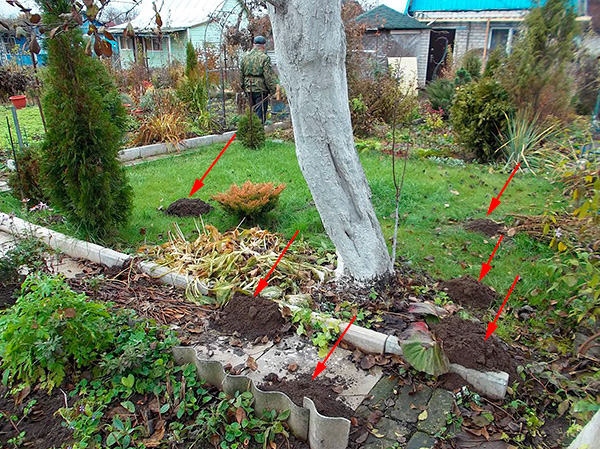
Generally speaking, you can get rid of annoying moles in the garden using a variety of methods and tools, and the main problem here is to understand the variety of available solutions and choose the one that turns out to be the most effective and convenient to use exactly on your site. It should be borne in mind that even a seemingly reliable and tested by other gardeners method of combating moles without proper implementation may not give the expected result.
Therefore, it is important not only to choose the best remedy for moles, but you also need to know how to effectively apply it in practice - and we will also consider these nuances below.
Below is a phased scheme for combating moles in the garden, which allows you to get rid of the pest in almost all cases. It begins with the application of the simplest methods that do not require significant expenditures of finance, time and effort. If the method does not work, then the next, more complex and expensive one is applied.
In general terms, the optimal sequence of application of funds from moles is as follows:
- First, moles can be scared away from the garden with homemade scarers or odors. To some this may seem like an absolutely superfluous and inefficient occupation, however, a huge number of gardeners managed to get rid of moles precisely by using funds from this group. And if so, then, one wonders why, for example, massively destroy moles with the help of traps (which still need to be bought), when you can drive away pests with simple homemade scarers or even some odorous folk remedies;

- If home-made repellers do not help, then electronic mole repellers of industrial production are used;

- If this does not give a result, more laborious methods of struggle are used - moles are caught using live traps or traps (someone even uses poison, although it is undesirable to do this - we will talk about this below);

- The most difficult and financially costly way to solve the problem is the mechanical protection of the garden from moles from outside penetrating it (using a fence and a lawn net). However, this is a very effective way to get rid of moles in the area once and for all.

On a note
In practice, it is often in accordance with this scheme that those who first encounter the problem of the appearance of moles in the garden plot act. When, for example, rotten fish and beer cans on bars do not give the desired effect, then “heavy artillery” is used: the so-called ultrasonic mole repellers (most of which are not ultrasonic, because they generate sounds in an audible frequency range), and traps and traps of various designs.
Let us now consider the appropriate methods and means of fighting moles in more detail ...
Scaring away moles
Among the most popular ways to get rid of moles in the garden are attempts to scare away pests with the help of sounds and smells.
Such a high popularity of this method of struggle is based on a number of advantages, which are achieved at the same time:
- Ease of implementation - a deterrent is simple enough to place in the garden so that it starts to work. Further, it in one way or another generates a sound or exudes smells that scare away moles and force them to leave the territory;
- Accessibility - many effective deterrents can be made with your own hands from improvised materials or very cheap raw materials;
- Humanity - repellers do not kill and do not cripple the animal;
- No need to contact the pest - you do not have to take a live mole in your hands, putting yourself at risk of being bitten, and you do not have to pull out an animal with crushed bones from the trap. With the effective operation of deterrents, the gardener will not see moles at all, since they will simply leave the site.

For these reasons, they try to scare off moles in the first place, and only in cases where this method does not help, other, more complex combat options are used.
The disadvantages of repellers include, first of all, their far from always high efficiency, as well as a certain inertia of work: even if the remedy is effective, the mole often does not leave the site immediately, but only after a few days (and sometimes after a few weeks).
An important point: since there are several ways to scare away a mole from a garden, it makes sense to combine different scare options to increase the total efficiency. For example, to scare away both sounds and smells - such an integrated approach significantly increases the chances of success.
Home-made noise tools
These devices are best known and most commonly used. Partly due to the widespread prevalence, homemade mole repellers are considered to be quite effective: even if they do not always allow getting rid of moles, the total number of cases when they do help is generally large.
Devices of this type include:
- Homemade turntables made of plastic bottles or cans, fixed on metal rods stuck into the ground or long tubes about 1 meter long (sometimes they just put aluminum cans). Rotating under the influence of wind, they rattle, this noise on metal is transmitted to the earth and scares away moles. Such designs are quite simple to manufacture and durable, and in a private house you can always find the necessary materials;


- Glass bottles that are buried in the ground at an angle of approximately 45 ° to such a depth that the neck of the bottle is above the ground. The wind, blowing into the bottle, creates a hum, which can also scare moles;

- Plastic bottles that just lay out on the site. With temperature changes day and night, they periodically crackle, and it is believed that such clicks scare off moles;

- The reed stalks stuck in molehills and also humming in the wind. According to some reports, reeds also scare off moles, but in practice this method is quite ineffective.
On a note
In addition, there are quite exotic options for scaring moles from the garden sounds. For example, there are cases of successful disposal of moles with the help of Chinese alarms placed in closed glass jars buried in the garden. And some summer residents report the successful removal of moles by periodically listening to loud music on the site, using a walk-behind tractor and a lawn mower.

Obviously, the more noise a particular device makes, the more likely it will help get rid of moles in the garden. However, do not forget that the same noise can annoy the gardener himself, who, instead of silence, will be forced to listen to the constant rumble of a weather vane or the rattle of beer cans. And the appearance of such repellers often does not contribute to the decoration of the site.
Be that as it may, home-made noise repellers sometimes really allow you to get rid of moles in the garden for a long time, and this is confirmed by numerous reviews of gardeners. Meanwhile, there are no fewer cases known when such devices were completely useless and had no effect on moles.
Electronic mole repellers
Compared to home-made noise devices, electronic mole repellers have a number of significant advantages, but they are not without certain disadvantages.

The main advantages are:
- Higher efficiency (of course, when it comes to quality repellers). Good devices generate sound of sufficiently high power directly into the soil, regularly change the duration, frequency and frequency of sound signals, thereby preventing pests from getting used to noise. In some models of repellers, the sound effect is supplemented by mechanical vibration created with the help of a small electric motor with an eccentric;
- Aesthetics - most electronic mole repellers look like cute small columns that do not impair the appearance of the beds;

- Sometimes it is important to use such devices to get rid of a mole in a greenhouse, where tools that work only in the wind are useless;
- Perhaps it is worth noting the ease of use - just turn on the device and just stick it into the ground at the right place in the area. By and large, the use of these repellers can be considered almost the easiest way to get rid of moles in the garden.
At the same time, these devices have disadvantages:
- Relatively high price - the cost of high-quality repellers is comparable to the cost of the most expensive traps (from 1000 to 5000 rubles). As for the cheap Chinese models - often they fail after the first rain, and we can’t even talk about their effectiveness;
- Battery life is limited in time - battery life or battery charge.
When choosing a particular mole repeller model, it makes sense first of all to pay attention to its ability to generate sounds and vibration in a random mode (the so-called “random” mode), as well as the overall build quality and protection against moisture.
Like home-made devices, electronic repellers help to get rid of moles usually not immediately, but for some time - from two to three days to 1-2 weeks. So if, for example, after a day of using the device, new heaps appeared next to it, do not rush ahead and break the "trinket" with a spade.
Fighting moles with odorous substances
This method is also very popular and, judging by the reviews of gardeners, gives about the same result as the use of homemade sound repellers. In other words, sometimes the effect is pronounced and achieved quickly, and sometimes even the seemingly total stuffing of beds with rotten fish and pouring their cat urine does not give any result.

In general, such attempts to get rid of a mole in a garden are usually realized in the following two options:
- The mole’s underground passages contain strongly smelling products - it can be rotten fish or meat, animal excrement and urine, technical liquids (kerosene, vinegar, solvent 646, paints, ammonia), as well as carbide or tablets from Alfos moles. As a rule, such deterrents are deposited in several places in the garden, as individual underground mole galleries can be filled up with earth and isolated from the rest of the system of moves. In such cases, the smell may not reach the animal;
- And the second option - throughout the site at certain intervals (usually in increments of 1 meter) to a depth of 20-30 cm are buried funds exuding any strong aroma. Usually, special balls with essential oils are used for this (there is, for example, the German Detia mole remedy in the form of balls with the smell of lavender, and you can also make such balls yourself from dough with the addition of essential oil). The strong odor evenly spreads in the soil and interferes with the mole, which searches for food with the help of smell.

In trying to get rid of a mole in your garden with the help of some odorous means, it is useful to adhere to common sense (however, as always): it is necessary to take into account that not only moles will feel the corresponding smell, but also those who work and rest in the garden, that is, you yourself. And you must admit, it will not be very comfortable when on a hot day a distinct “aroma” of rotten fish or excrement mixes with the fragrance of flowers.
As for the use of technical fluids in the garden and garden, this can be not only harmful to the soil (soil microorganisms are destroyed), but also fire hazard, especially when gasoline, kerosene, white spirit are generously poured into the ground, etc. liquids.
Catching and killing pests
The way to get rid of a mole in the garden by trapping it is considered one of the most effective and fastest - if the mole trap is correctly placed, you can catch it literally within one to two days. However, if the animal was not caught in 2-3 days, then the trap is simply rearranged in another place. Usually, no more than 2-3 permutations are required to capture a pest.

On a note
Sometimes experienced gardeners catch moles, not using traps or traps at all, but with just one shovel. But, of course, this method is more time-consuming and requires a considerable investment of time. This trapping is implemented as follows: the mole must be trapped, waiting for the moment when it will pass along one of the passages closest to the surface of the earth (the soil will rise), then very quickly undermine behind it and throw the earth with the animal to the surface.
In general, the capture of a mole on a site always requires certain efforts, much more than in the case of repellers. Even if the trap is not done with your own hands, but bought, to install it you need to find and unearth the course, correctly install the device and take measures so that the mole does not notice the consequences of excavation.
With comparable effectiveness of various designs of mole traps, their prices vary greatly. The simplest wire traps cost about 20 rubles apiece, and the most expensive traps - more than 3000 rubles.
In addition, an effective trap for moles can be made with your own hands (more on this below).
Feedback
“I just saw these heaps in my garden, I immediately realized that I needed to act quickly. The garden is already dug up, in a couple of weeks you need to take out the seedlings, and then this comrade. I began to figure out what to do and realized that this was a whole science. So you need to buy a trap, bury it, if you dug it in the wrong place, then dig it in, and not the fact that it will work. I found guys on the Internet who get rid of moles. He called, the guys arrived with their equipment, they set the traps themselves, left. It took an hour somewhere. The next day, one of the guys arrived and took out a trap with a mole. All. No problem. The issue’s price is 2000 rubles, the matter is in Gatchina ... ”
Pavel, Gatchina
Mole catchers
The main advantage of live traps is the ability to catch a mole without killing and mutilating it, and after capture it is easy to take it out of the garden and let it out. This is fully consistent with the principles of civilized farming and a humane attitude towards animals.

Live traps can have a different design, but most often only two options are used:
- A pipe trap that is inserted into the mole, as if continuing it, while its doors easily open inward, but do not open outward. Accordingly, the mole easily creeps into such a mole catcher and can no longer get out of it;
- The pit trap, which is a jar, pot or bucket, buried under the course of the mole. The animal simply falls into the tank, running through its tunnel.
The photo below shows an example of a mole head-pipe of industrial production:
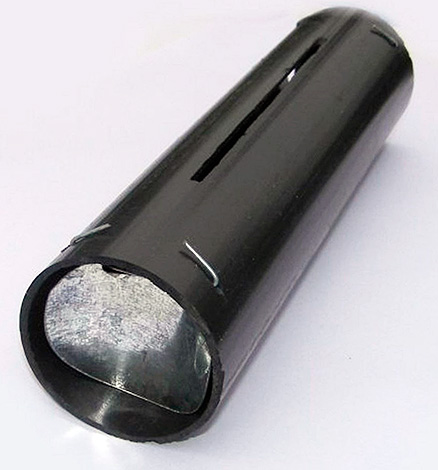
Prices for such traps range from 350-1200 rubles. However, a pipe trap can be made with your own hands:

And the photograph below shows a pit trap made from a three-liter can buried under the mole:
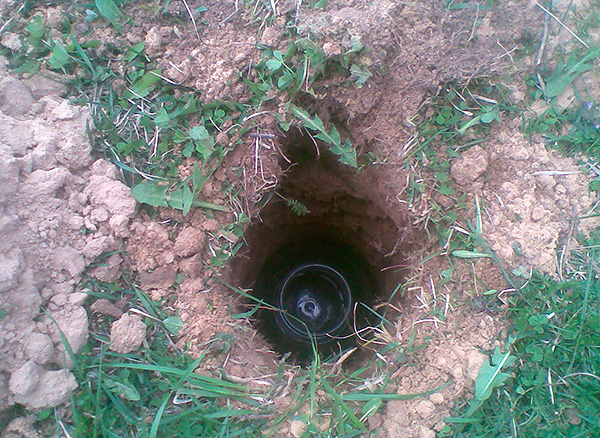

Shortcomings in the use of live traps are associated with the complexity of their installation and the need for regular inspection.
The mole's course needs to be unearthed beforehand, after which a trap should be set into it, and this should be done as carefully as possible. Then, the site of the “excavation” should be covered with opaque cloth or other material and the catch should be checked approximately every 5-6 hours.
On a note
You may ask, why check the trap so often? The fact is that without food, the mole will die of starvation in it within the first 18-24 hours - thus, a humane live-trap would turn into a kind of torture chamber for the animal.
After the mole is caught, they are carried out at a distance of 1-1.5 km from the garden plot, and in this case the pest will certainly not come back.
Thus, it is quite obvious that getting rid of moles with the help of live traps, while trying to save the animals' lives, is a very troublesome process. However, the effectiveness of the method is very high and, in addition, the conscience of the owner of the site remains clean.
Feedback
“Last fall, we decided at all costs to get rid of moles in the next season. The first mole wound up in the yard, and then heaps began to appear throughout the garden. I don’t know how many moles there were at all, but this time we bought two traps in the form of pipes, put them in the moves, my husband regularly checked them. The very next day we caught two moles, and then two more during the week. I don’t know where we got so many from, maybe it was the mother and the cubs. The husband carried them out and let them out there. And only after that we sighed calmly. And then all last year it was necessary to clean this heap, half of the beds were spoiled. ”
Anna, from correspondence on the forum
Traps and other lethal means
The effectiveness of traps that kill or maim moles is almost the same as that of live traps. The disadvantage lies precisely in the lethality of their action: generally speaking, killing animals just because their house crossed with your site is not very humane.
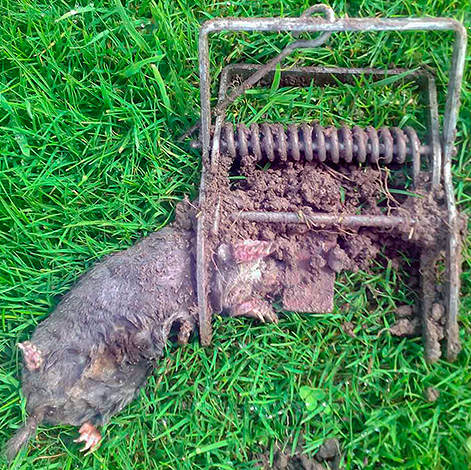
The undoubted advantage of the traps, which many gardeners like is the much less laborious use of them as compared to live traps: after installation, the device does not need to be checked too often, and after the operation of the killed animal, it is not necessary to take it out anywhere.
To combat moles in the garden, the following types of traps are usually used:
- Wire moleholes that strangle the animal, squeezing its body;

- Scissor traps (plunger traps), when triggered, compress the moles with their brackets and break the bones of the animal;

- Harpoon traps piercing the animal with sharp knitting needles;

- Crushers in which moles come across in the same way as mice and rats (in other words, mousetraps).

On a note
Gardeners with increased flaky inclinations prefer to catch moles on fishing hooks tied to a solid fishing line. When moving along the underground passage, the animal bumps onto the hook, and the fishing line tied to a long stick prevents the animal from moving on. As a result, the owner of the plot, satisfied with the catch, pulls out the resting mole by the fishing line, often tearing his skin and muscles to him. However, all this is “trifles”, because in a moment the mole will be killed by logs.
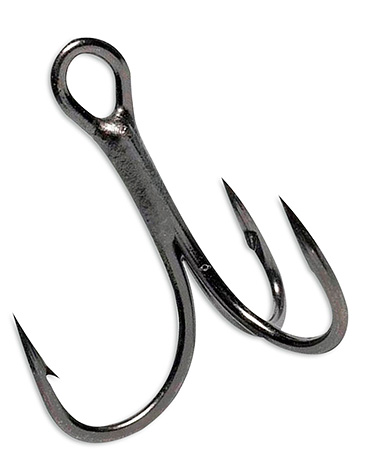
Sometimes they try to get rid of moles with the help of electricity, for example, using electric rat traps. There are some problems here, since such rat traps require a network connection, and garden moles are usually located at a fairly large distance from the nearest outlet.
Perhaps it is also worth noting that when there is neither time nor desire to get rid of moles on a garden plot (especially a large area), today there is also the opportunity to call special deratization services, which without any effort on the part of the owner of the plot will remove all moles from vegetable garden.
Mole poisoning
In general, we can say that getting rid of moles in your garden with the help of toxic substances is in most cases impractical: not only is it inhumane, it also creates a real danger of poisoning pets (including neighboring cats and dogs), as well as wild birds.And in some cases, the poison can fall into the crop harvested in the garden.
Despite these risks, some gardeners still lay in the moves of a mole of earthworms treated with rat poison. And sometimes this method of struggle gives results.

On a note
In the United States and Canada, special poisonous worm baits for moles are even sold. Their advantage over natural worms with poison lies only in the fact that the bait does not need to be prepared on its own - the finished "vermicelli" are simply taken out of the package and put into the mole's course.
Sometimes moles try to poison the exhaust fumes of a car. There are several drawbacks to this method:
- This does not always work (the animal’s moves can crumble and, therefore, gas will not penetrate into the communications);
- It is harmful to soil microorganisms and plants;
- And finally, to arrange a kind of gas attack for moles is simply inhumane.
Moles and other ways to protect the site
The use of fences is not so much a way to get rid of moles in the garden as a means of protecting the site after the fight. If there are already moles on the site, then, of course, they cannot be driven out with fences.
But if it was possible to get rid of moles with the help of the above means, then once and for all the re-emergence of pests can be prevented by creating an insurmountable mechanical barrier.
Perimeter fence
The most obvious and very reliable way to create a fence is to dig a trench along the perimeter of the site with a depth of at least 80 cm, then install a mesh with a mesh of 1-2 cm into it and fill it up. Instead of mesh, you can also use slate, crushed stone, concrete, but in the standard case, mesh is the most inexpensive option. The cost of fencing with it is approximately 300 rubles per linear meter of the border (taking into account the work to dig a trench).
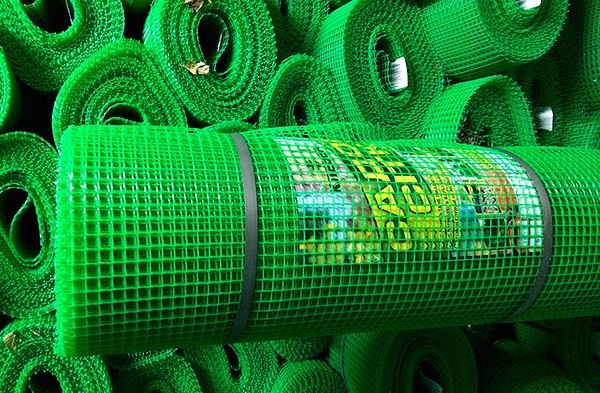
In the same way, flower beds, greenhouses and beds inside the garden can be protected from moles, and in this case the costs will be significantly lower.
Practice shows that if the site is surrounded by a solid fence with a sufficiently deep (up to 40 cm) foundation, then this is also a reliable protection against moles.
Nevertheless, theoretically, the animal is able to dig under such a foundation, and even under a fence buried to a depth of 80 cm, because the nest of moles can be located at a depth of up to 2.5 meters. However, in practice, 80 cm in most cases is more than enough.
Lawn protection against moles
To prevent the appearance of mole heaps on the lawn, it is enough to lay a plastic net from moles horizontally over the entire area of the lawn at a depth of 5-10 cm from the surface of the earth. From above this grid is covered with a roll lawn, or it is covered with earth and lawn grass is sown on it. From under the fence, the mole will not be able to climb up, and even if there are its moves, no signs on the soil surface will be noticeable.
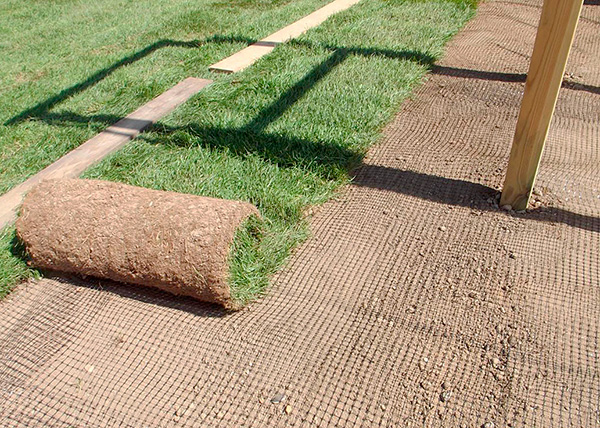
Sometimes the net from moles is even simply laid on an existing lawn, and it quickly hides (is drowned) in the grass, which grows through the cells.
For gardens and flower gardens, this method is less likely to be used, since it is complicated by the need to plant certain plants.
Plants as a living barrier
Sometimes they try to protect the garden area from moles by planting on it (usually around the perimeter) various plants that moles are supposed to avoid. Among these plants, the following are most often used: black beans, castor oil plant, imperial hazel grouse, marigolds, onions, garlic, daffodils, etc.
However, it should be said that this method does not have proven effectiveness, and there are no statistically significant cases of successful protection of the site by just such plants (there are only a few references).
If you have personal experience of getting rid of moles in the garden (positive or negative), then be sure to leave your review at the bottom of this page in the comments box.
An interesting video with an example of the use of sound repellers of moles and rodents
How to get rid of moles on a site (example of using molehills)

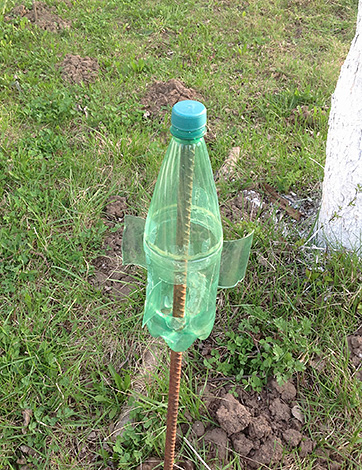
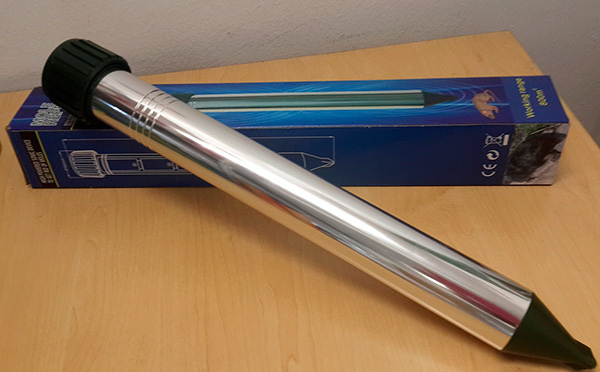
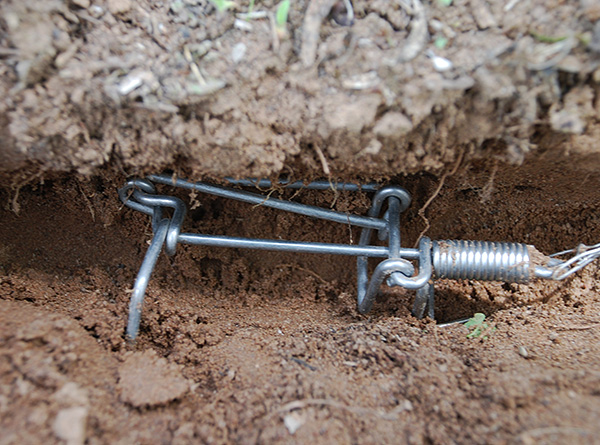
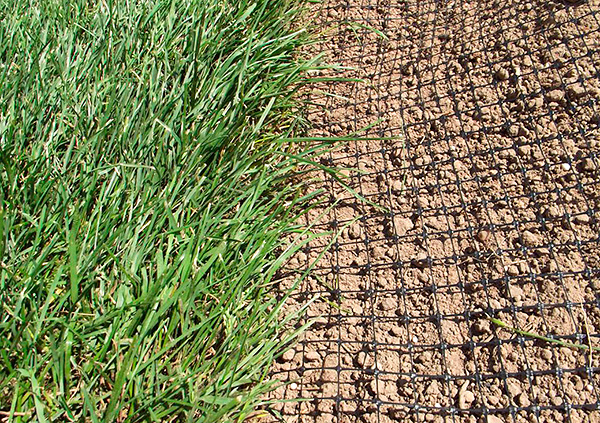
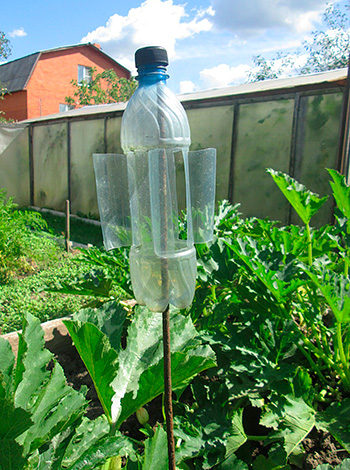
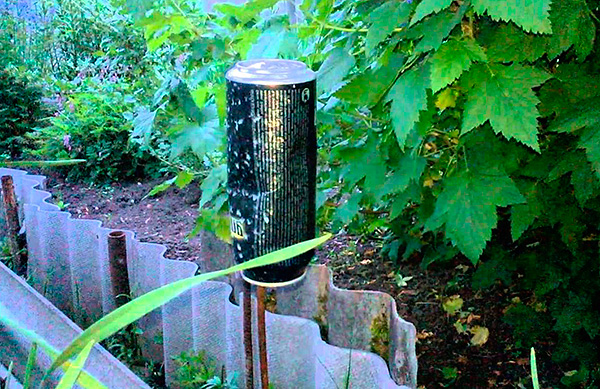
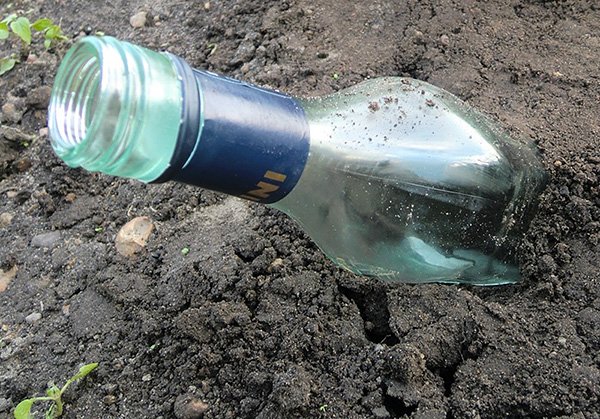



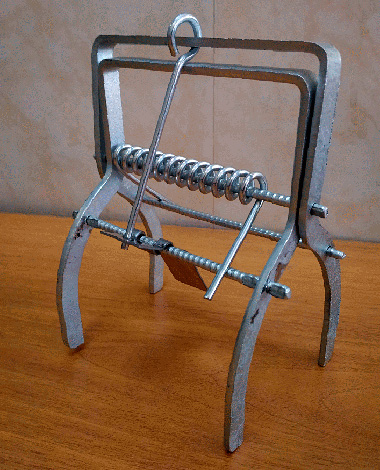





No matter how people pity them, there are creatures on earth that prevent humanity from living. Maybe they are useful in some ways, but they do more harm, therefore we are all people, and we want to live in peace so that no one gets us. You do not regret flies, but these creatures also, perhaps, bring some benefit, who knows. Therefore, I ask you not to judge strictly and not to pretend to be environmentalists.
I have been fighting moles for about 5 years, nothing helped. Poisoned, transferred money, tried to set traps, drove cats, poured water with caustic soda. He drove the car, inserted a hose from a vacuum cleaner into the muffler pipe, and the other end into a hole was useless. I tried to jam - I dug a hole in his hole, inserted a brown and a half brown, pre-charged with food-foil balls, and poured the Krot sanitary ware, quickly mixed, closed the lid, inserted the bottle into the hole, covered it with a bucket, and also a concrete block on top. An explosion - and a couple of days there are no moles, and then they walk around at home. And this year he took the extension cord, connected the cable 5 meters to the phase and 5 meters to the minus and drove the pins into the ground at a distance of 10 meters. And the second end of the extension cord to the outlet. The month is still quiet. So I'm sorry, but I do not want to live on the Khatyn field.